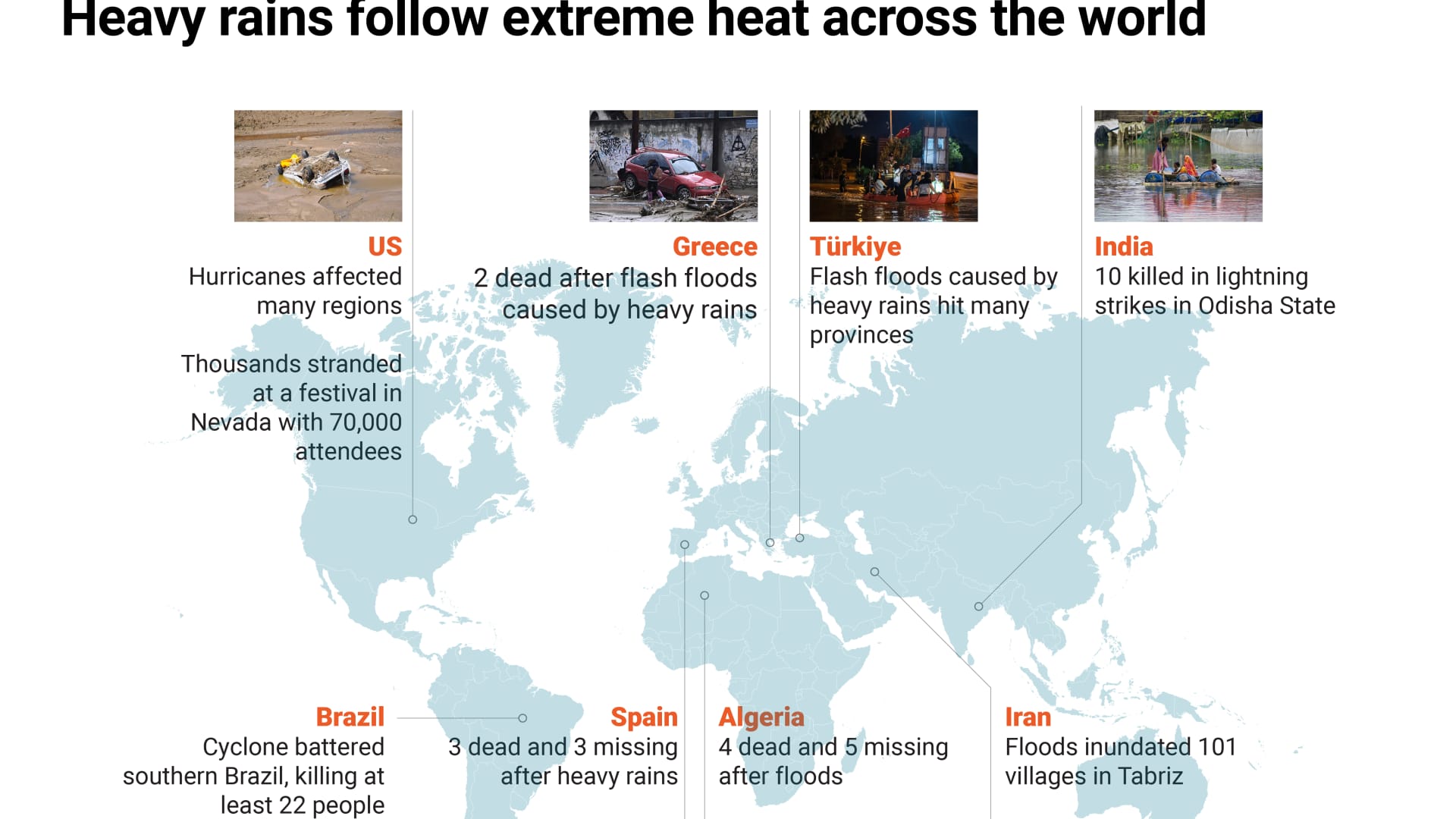
- The UN's World Meteorological Organization and European climate service Copernicus on Wednesday announced that the June to August season of 2023 was the warmest such period in records beginning in 1940.
- The month of August was found to be the hottest on record by a large margin and the second hottest month after July this year.
- "We can still avoid the worst of climate chaos – and we don't have a moment to lose," UN Secretary-General António Guterres said.
The world just experienced its hottest three months on record by a substantial margin, according to the UN weather agency, prompting the UN chief to call for world leaders to take urgent climate action.
The UN's World Meteorological Organization and European climate service Copernicus on Wednesday announced that the June to August season of 2023 was the warmest such period in records that began in 1940.
The average temperature for those three months was 16.77 degrees Celsius (62.19 degrees Fahrenheit), which was 0.66 degrees Celsius above average for the period.
Get top local stories in Philly delivered to you every morning. Sign up for NBC Philadelphia's News Headlines newsletter.
The month of August was found to be the hottest on record by a large margin and the second hottest month after July 2023.
The global average surface air temperature of 16.82 degrees Celsius for August was 0.71 degrees Celsius warmer than the 1991 to 2020 average for the month, and 0.31 degrees Celsius warmer than the previous hottest August, logged in 2016.
It comes after a series of extreme weather events across the Northern Hemisphere, with repeated heatwaves fueling devastating wildfires.
Money Report
"Climate breakdown has begun," UN Secretary-General António Guterres said in a statement.
"Scientists have long warned what our fossil fuel addiction will unleash," Guterres said, adding that "surging temperatures demand a surge in action."
The UN chief said that this latest global heat record must coincide with world leaders urgently pursuing climate solutions. "We can still avoid the worst of climate chaos – and we don't have a moment to lose," Guterres said.
The burning of fossil fuels, such as coal, oil and gas, is the chief driver of the climate crisis.
What about El Niño?
The WMO made clear that the extreme weather events seen across the world this summer were taking place before the full warming impact of El Niño, a major climate phenomenon which typically plays out in the second year after it develops.
El Niño — or "the little boy" in Spanish — is widely recognized as the warming of the sea surface temperature, a naturally occurring climate pattern which happens on average every two to seven years.
The effects of El Niño tend to peak during December, but the impact typically takes time to spread across the globe. This lagged effect is why forecasters believe 2024 could be the first year that humanity surpasses 1.5 degrees Celsius above preindustrial levels.

The 1.5 degrees Celsius threshold is the aspirational global temperature limit set in the landmark 2015 Paris Agreement. Beyond this level it is more likely to experience so-called tipping points — thresholds at which small changes can lead to dramatic shifts in Earth's entire life-support system.
"Eight months into 2023, so far we are experiencing the second warmest year to date, only fractionally cooler than 2016, and August was estimated to be around 1.5°C warmer than pre-industrial levels," said Carlo Buontempo, director of the Copernicus Climate Change Service, ECMWF.
"What we are observing, not only new extremes but the persistence of these record-breaking conditions, and the impacts these have on both people and planet, are a clear consequence of the warming of the climate system," Buontempo added.
The climate crisis is making extreme weather more frequent and more intense.






